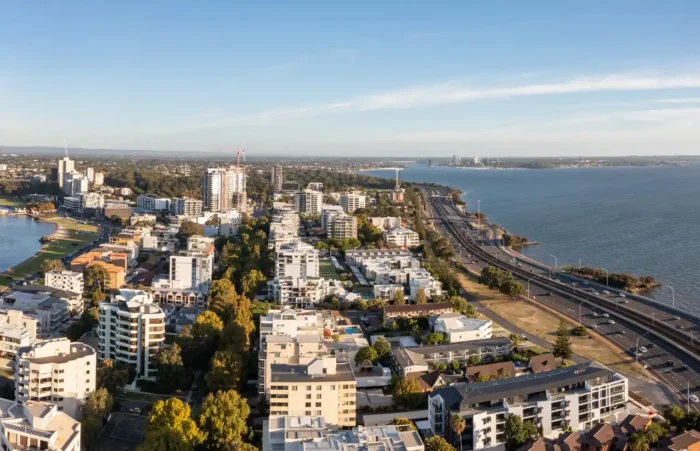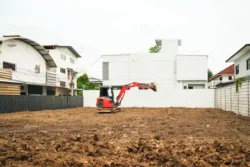Owning a Million-Dollar Home in Australia is Now Just “Average”
Published
June 18, 2025
Published
June 18, 2025

The Australian Bureau of Statistics (ABS) announced on June 10 that Australia quietly hit a huge milestone in the March 2025 quarter: the national average dwelling price cracked $1 million for the first time, reaching $1,002,500.
Understandably, it’s caused prospective first-time buyers to shudder: a million-dollar home is now the average one can expect when becoming a homeowner? That was once the prized goal for many and a signal that you were uniquely wealthy. No longer, it seems.
As investors in both commercial and residential property, we feel it’s a moment worth reflecting upon—what does this mean for the property market today, and what should we anticipate next?
How We Got Here

Reaching the million-dollar mark wasn’t sudden. National dwelling prices have steadily climbed since 2013, effectively doubling over the past decade. In the March quarter alone, property values surged by over $130 billion, lifting Australia’s total residential real estate stock to a whopping $11.4 trillion.
Notably, it’s not just Sydney and Melbourne pushing the numbers up. Queensland and South Australia have emerged as two powerhouses for growth, with quarter-on-quarter price rises of 1.9 per cent and 1.6 per cent respectively.
And Perth, once overlooked by the interstate buyer market, has surpassed Melbourne’s median dwelling value for the first time in more than a decade. It’s indeed wild out west, with streets turning into parking lots outside home opens and the average first-time buyer feeling hopeless about their prospects of owning an established dwelling. It’s not just affordability, it’s scarcity.
Demand Isn’t Slowing
Fueling this continued rise is sustained demand—particularly from immigration.
Last year, Australia recorded net overseas migration of 482,000 people, pushing national population growth to around 2.5 per cent for the year. Simply put, more people means more demand for housing—whether rental or ownership—and listings are being absorbed almost as quickly as they come to market.
Meanwhile, investor loan volumes have picked back up, rising by 14 per cent year-on-year despite relatively high (but falling) borrowing costs still plaguing borrowers.
Supply Struggling to Keep Up
Demand stays robust and, as we all know, supply is seriously lagging. The ABS reported that building approvals dropped another 5.7 per cent in April, compounding the 8.8 per cent decline seen the previous month. Of concern is that apartment approvals are at historic lows. Some hoped largescale residential projects would be the silver bullet for Australia’s affordability crisis, but that doesn’t appear to be the outcome just yet.
The federal government’s ambitious goal to deliver 1.2 million new homes by 2029 seems increasingly unrealistic—that is, without local and state governments cutting the red tape for builders, amending zoning restrictions in particular areas and lowering the hurdles to ownership (like removing stamp duty, for one).
Will Affordability Set the Ceiling?

So, the big question inevitably arises—are current price levels sustainable?
Today, the median Australian house costs approximately 8.0 times the average annual household income, well above the long-term average of around 6 times.
And as fixed-rate loans progressively expire (yes, another fixed rate mortgage cliff is expected in Australia), some concerns inevitably rise.
Many who’ve been around the track a few times will know this: affordability could really become the decisive factor limiting further price growth. Even if mortgage rates drop by 1.35 per cent by the end of 2025—a reasonable scenario—the average income earning household would only comfortably afford a property around $593,000. That’s a long way from the current average dwelling price.
Looking Ahead
On the horizon, there are some key policy factors investors should monitor closely. Markets have already priced in potential Reserve Bank rate cuts by Christmas, with each 25 basis-point reduction potentially adding around 3 per cent to average borrowing capacity.
For investors, the coming period may bring opportunity if supply remains constrained and borrowing becomes slightly easier. But affordability barriers for the typical Aussie might see a flattening (or even a slight correction) in some of the hotter markets.
What to Watch Over the Next Year?
Looking forward for the next 12 to 18 months, it seems two primary scenarios might come our way. For one, more rate cuts could occur, stretching affordability and pushing prices upwards. Secondly, rates fall slightly but wage growth stalls. That means purchasing power remains capped, leaving national price growth flat or slightly negative.
And this doesn’t even take into account foreign influences. In today’s global economy, markets in the US, the UK and elsewhere are not all that far from ours. It’s important to keep in mind as trade wars—and sadly, actual wars—play out around the globe.
In any scenario, the shortage of supply in Aussie property markets will calm many with a hand in the game. But as always, investors should stay informed and adaptable. Read headlines with caution (especially those written by non-property-specific publications) and look to your expert financial advisers for guidance. Information and relying on property fundamentals will be the keys to navigating whatever happens next in the story of Australian residential and commercial real estate.
Want relevant real estate news and views, delivered right to your inbox? Subscribe to receive our monthly newsletter. You’ll be joining +1,000 investors who’ve enjoyed our property nous every month. (We never spam you or share your information, and you can unsubscribe anytime.)






